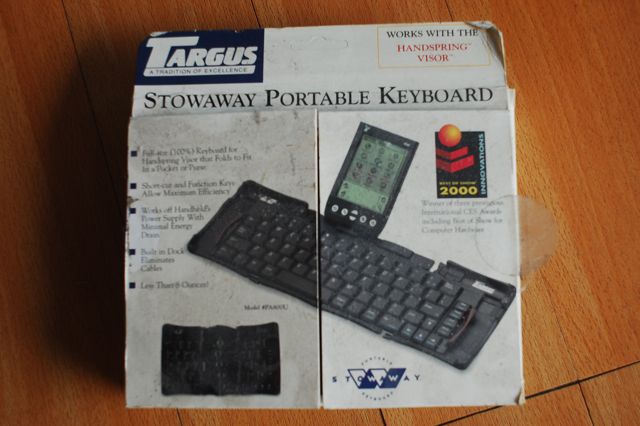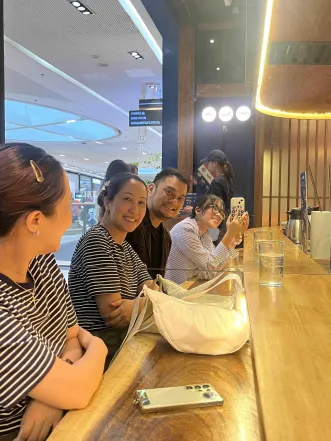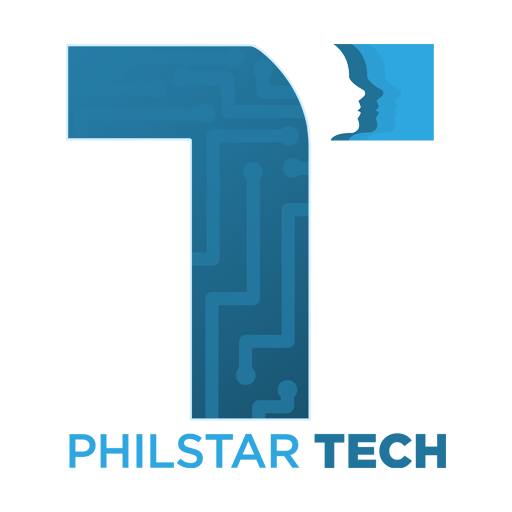The year is 2001. I am sitting by the wall of the classroom for my thesis, waiting for the professor. I intentionally did not bring a pen and paper to this class but instead produce a Handspring Visor Prism from my pocket. By today’s standards, it is a tad clunky, yet small enough to have fit in my jeans pocket. With my blockmates’ eyes on me, I also pull out a Targus foldable keyboard. Like a magician, I unfold the keyboard and attach it to the device. To cap the mini magic show, I pull out a landline cable and a portable modem the size of a pandesal. I attach one end of the wire to the phone socket – the reason why I sit near the wall, and the other end to my Handspring – a PDA, which back then was the acronym used to mean Personal Digital Assistant, the precursor to the smartphone. I open up the app called “The Internet” and try to connect to the world wide web. It takes me five failed tries on dial-up. I successfully connect on the sixth. I am now browsing text-based WAP sites at blazing fast speeds of 10kb/s. I download email, update my RSS feeds from my favorite news websites and promptly disconnect – or rather am disconnected abruptly because of a faulty connection. “This is the future!” I tell myself quietly.


The year is 2009. I had just finished attending a press conference for the new Nokia E72 in Singapore. With a digital camera in one hand and the phone in the other, I take a short video fiddling around with the settings. By this time, Google had recently purchased a site called YouTube and was fast-becoming the way the world shared video. I immediately transferred the raw video from my camera using an SD card to my laptop and uploaded it on YouTube courtesy of the free WiFi at the event venue. Thankfully, Singapore Internet was blazing fast at that time, only taking 30 minutes for a 3 minute video. Minutes later, my video racked up more than 100,000 views since, because of the time zone difference, I was able to scoop the launch ahead of the West. “This is the future!” I tell myself quietly.
The year is 2025. I’m trying to look for copyright-free music to use for a video I shot for PhilSTAR Tech’s social pages. I can’t believe I’m able to shoot cinema quality video in 4k resolution with a device that was lighter than the Handspring Visor I owned in 2001. Frustrated with the selections online, I decide to compose original music with the help of an AI Assistant. Using ChatGPT I refine some lyrics I had prepared, but asking it for help to complete a chorus line. It takes one try and in less than 30 seconds it churns out lyrics for a whole song. After some refinement, I feed the lyrics to another AI application that has been trained to compose musical arrangements. I ask it to add instruments such as the harmonica, mood of upbeat tempo, and in 4/4 time signature. In another 30 seconds I am presented with two song choices, both copyright free, preventing strikes to social media. I mull about this for a bit, the absurdity of how fast it was to create a song in less time than it took to connect to the Internet in 2001. “This is the future!” I tell myself quietly.
This is the present and it’s bonkers.
If 2001 me read what 2025 me wrote, his mind would probably have exploded. “This is the future!” He would exclaim, loudly! As the current editor for The Philippine STAR’s technology section, I grapple daily with what these new changes mean for the publishing industry as well – as tech and content are greatly intertwined. With technology, the 3PM print deadline is now “always on” – a slogan that was quite common when social media and video on demand turned mainstream roughly fifteen years ago. With social media and websites, newspaper subscriptions have been shelved for algorithms and pageviews. Fast forward to today, technology is making a direct impact with people’s livelihoods because of Artificial Intelligence.
Last year we concluded the PRO Future Summit, a gathering of actual AI industry practitioners discussing how large language models are sunsetting some job skillsets and also creating new ones. We talked about the discord in the creative industry of whether generative AI should be used by graphic designers for work. We got into deep conversation with how we are truly in the post-truth world – journalists need to be more vigilant with deep fakes and cybercrime. The AI summit was just the beginning. Throughout the year, we learned how Gen Z, that instead of having one resume, has several versions of their resume ready to fit LinkedIn job descriptions to bag interviews. They do this with the help of AI. We have a piece that echoes the free therapy and life advice ChatGPT and Gemini give in order to hack through life. We’ve spoken about the growing skill gap in the BPO workforce with people agents being replaced by AI agents, while some working smart to upskill with more lucrative positions. It’s the tech. It’s the phones. It’s the gadgets – but with so much more.
Yes, it isn’t about the gadgets: the phones. The cameras. The laptops. Sure that’s there. They will always be there. But as editor, I’ve always been more interested in the people that use them. That make them. That market them. That hack them.That’s not to undermine our lack of gadget coverage – in fact we have a lot. The past year saw the PhilSTAR Tech team travel around the world, covering the biggest product launches and conventions – from CES in Las Vegas to IFA Berlin, from Samsung Unpacked during the 2024 Paris Olympics to a handful of factory tours in Shenzhen, China. The gears of tech have vastly shifted with Asia becoming the new hotspots for innovation.

This year, as the tech section celebrates ‘One Star, One Vision’ we continue to be the human guide that connects the past to the present, distilling hope from the fears of the future. Because what is technology if it cannot improve lives? We will do more. AI is the hot topic because it impacts our perception of the truth, but also the livelihoods of people. It is the creeping anxiety that slowly eats away a new generation that graduated during the pandemic. But beyond this is hope (because what is life without it). We will explore deeper meaning with technology in education, in finance, in real estate, in agriculture, in health.
And as we step into another year of technological change, the same question lingers—what’s next? The devices will keep evolving, AI will push boundaries, and industries will either adapt or be left behind. But through it all, one thing remains constant: the human element.
Technology is not just about the next big gadget or the latest AI breakthrough. It’s about the people who create, use, and adapt to it. It’s about the students hacking their way through job searches, the artists redefining creativity, the businesses reshaping the way we work.
The future isn’t coming—it’s already here. And once again, I find myself saying, not so quietly this time:
This is the future. And we’re living it.




